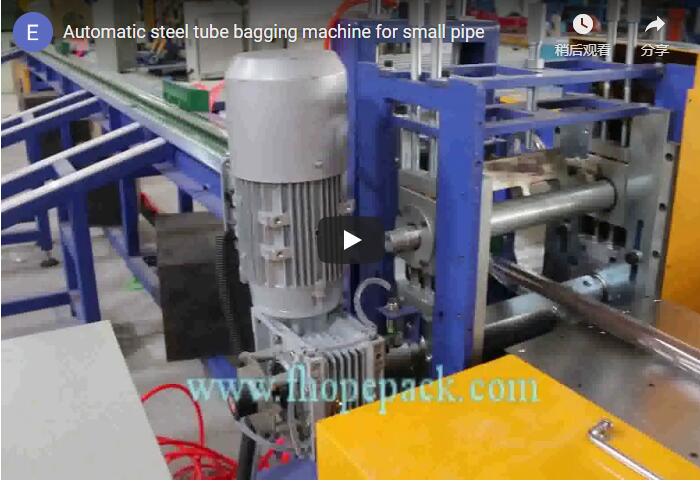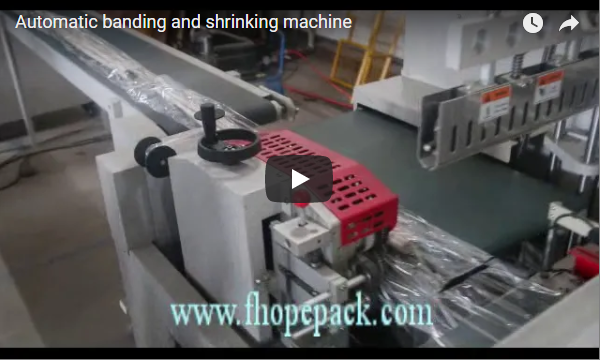Streamlining Operations: The Role of Automatic Pillow Flow Packaging Machines in Modern Fabrication
In today's competitive manufacturing landscape, optimizing every stage of production is critical. For fabricators dealing with elongated products like aluminum profiles, tubes, pipes, and extrusions, the packaging process often presents a significant bottleneck. Addressing this challenge requires advanced automation, and the automatic pillow flow packaging machine, also known as a horizontal form-fill-seal (HFFS) wrapper, emerges as a powerful solution.
These machines are engineered for continuous, high-speed operation, transforming packaging from a labor-intensive task into a streamlined, automated process. Leveraging technologies often detailed in packaging automation research and reflected in numerous patents covering film handling and sealing mechanisms, these systems deliver efficiency, consistency, and product protection.
Operational Workflow: Precision Automation in Action
The operation of an automatic pillow flow wrapper is a precisely orchestrated sequence managed by sophisticated control systems:
- Infeed and Detection: Materials are introduced onto the infeed conveyor. Advanced sensor systems—often optical or laser-based, as highlighted in industrial automation journals—accurately detect the length and position of each item. This data is crucial for synchronized operation.
- Conveying: The product smoothly transitions onto the main conveyor belt, moving towards the wrapping station. Conveyor speeds are typically variable and synchronized with the film feed and sealing processes via the central PLC.
- Film Dispensing and Forming: Packaging film (commonly polyethylene, polypropylene, or laminates) is drawn from two rolls (or a single center-folded roll). It's precisely formed into a continuous tube around the product. Research in polymer science often guides the selection of appropriate film types based on required barrier properties and sealability.
- Sealing and Cutting (Pillow Formation): As the product moves within the film tube, heated sealing jaws or ultrasonic systems create longitudinal fin seals and transverse end seals. A cutting mechanism then separates each wrapped item, creating the characteristic "pillow" pack. Patents in this area often focus on optimizing jaw design (e.g., US Patent No. X,XXX,XXX) for improved seal integrity at high speeds and varying film types.
- Counting and Cartoning: Post-wrapping, an automatic counting system groups a predetermined number of pillow-packed items. These bundles are then typically transferred into cartons or cases.
- Case Sealing and Discharge: The filled cartons are automatically closed and sealed (e.g., via tape or glue) before being discharged from the end of the line, ready for palletizing or shipment.
Key Features and Technological Considerations
Modern automatic pillow flow packaging machines incorporate several advanced features:
- Control System: Typically utilize Programmable Logic Controllers (PLCs) paired with Human-Machine Interfaces (HMIs) for intuitive operation, parameter adjustment (speed, bag length, sealing temperature), recipe storage, and diagnostics.
- Variable Speed Operation: Capable of adjusting speeds (often cited between 30-50 packages per minute, but higher speeds are possible depending on product and film) to match upstream production rates.
- Versatile Film Handling: Designed to handle a range of packaging film types and thicknesses.
- Precision Sealing: Employ advanced temperature control for heat sealing or utilize ultrasonic technology for specific applications, ensuring consistent, high-integrity seals critical for product protection.
- Sensor Integration: Utilize multiple sensors for product detection, positioning, film tracking, and safety interlocks, minimizing errors and downtime.
- Robust Construction: Built for durability in demanding industrial environments, often featuring stainless steel contact parts as per industry standards discussed in publications like The Fabricator.
Tangible Benefits for Fabricators
Integrating automatic pillow flow wrapping systems yields significant advantages:
- Increased Throughput: Dramatically boosts packaging speed compared to manual or semi-automatic methods.
- Reduced Labor Costs: Frees up personnel from repetitive manual packaging tasks, allowing reallocation to higher-value activities.
- Improved Package Consistency: Ensures uniform package appearance and seal quality, enhancing brand presentation.
- Enhanced Product Protection: Tightly sealed pillow packs protect products from dust, moisture, scratches, and minor impacts during handling and transit.
- Material Efficiency: Precise film control can minimize waste compared to manual wrapping methods.
- Integration Potential: Can be seamlessly integrated into fully automated production lines.
Diverse Applications Across Industries
While ideal for metal extrusions, tubes, and pipes, the application of these machines extends to:
- Plastic profiles and extrusions
- Timber and wood products
- Window and door components
- Hardware and building supplies
- Bundled items requiring secure wrapping
By automating the end-of-line packaging process for elongated items, automatic pillow flow packaging machines offer a compelling return on investment for fabricators seeking enhanced efficiency, reduced operational costs, and improved product quality, aligning perfectly with the continuous improvement goals prevalent in the modern metal fabrication industry.






